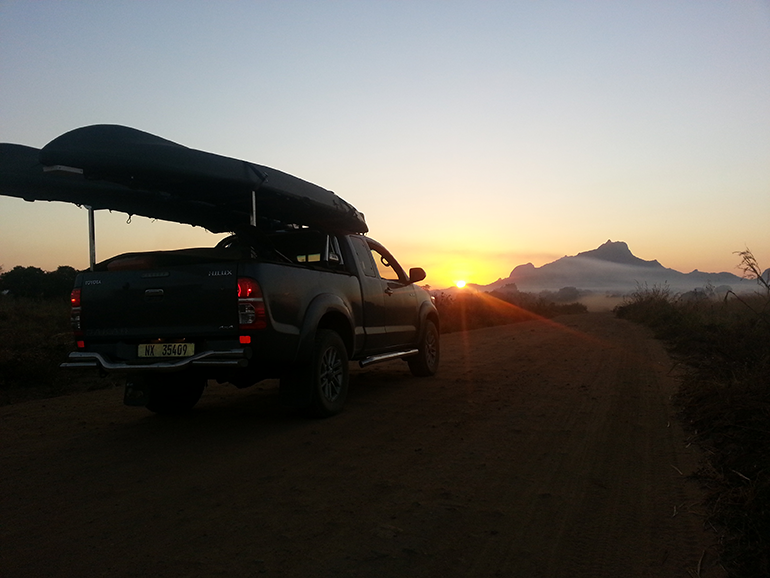Our luck was in when we crossed paths with Captain Nacri, the formidable Mozambican owner of Banco São Paulo. The language barrier soon had us reverting to sign language and charades as we drew imaginary pictures on the side of his nine-metre dhow. Shortly thereafter, we were warmly welcomed onto his sea-faring vessel. With our kayaks and gear safely on board, we fought our way through the powerful shore breakers to arrive at Ibo. Or so we thought.
From the outset, it was clear the Banco São Paulo had seen better days. Two crewmembers had to permanently baili out water as we skimmed through the crystal-clear water of the Quirimbas Archipelago, an isolated and remote stretch of coastline where the marine environments and beaches are ecologically pristine and largely unexplored. Despite the challenges on board and the dhow taking a serious hammering, we instead set foot on the spectacular Quilalea Island five hours later.
Due to the wind, which was heading back south, Captain Nacri was no longer keen on to sail to Ibo. Instead, he convinced us to sail with him to Situ Island, where he could employ the local carpenter to repair his beloved dhow, before returning to Pemba.
On Situ, we led the island life for three blissful days, during which time the hull was revamped. The following day, now day 12 of the trip, we set sail back to Pemba in the company of some always-mesmerizing dolphins. On our arrival, we packed once more in earnest as only six days remained of our island holiday before we would return homea and there were still a few places we wanted to explore.
The days and nights that followed were magical. We enjoyed one fantastic night in Monkey Bay, Malawi, followed by three nights in Zambia, of which one night was spent in a very wild Lower Zambezi National Park. We allowed ourselves a quick stop at Vic Falls for the mandatory photos, and then it was on to Botswana, via the Kazugula ferry. We crossed the South African border post just before midnight.
As I write this, I am constantly reminded of all our plans that were rendered useless and I have come to the conclusion that you cannot dictate to Africa. The Mother continent demands respect. Africa is not for the faint-hearted!
Thank you to my sponsors Legend Kayaks, Cape Union Mart (especially for the Franklin Jacket) and ACDC Express Centurion for their tough-as-nails solar panels.
Statistics:
Total hours spent driving: 121 hours
Total distance driven: 7,525 km
Distance completed on kayaks: 125 km
Border posts crossed: 16
Countries visited: 5
Total time away: 3 weeks
